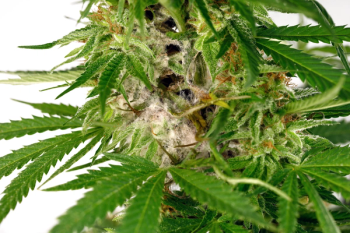
Cannabis Science and Technology
- March/April 2018
- Volume 1
- Issue 1
Metals in Cannabis and Related Substances-Regulations and Analytical Methodologies
Evolution in the legislation regarding the production and consumption of cannabis and related products for medicinal and recreational uses has led to emerging regulations regarding the potency, terpene profiles, and impurity content of such products. Among the impurities, or contaminants, that require testing are metals. Because of their toxicity and carcinogenicity, most jurisdictions are, at a minimum, requiring testing for arsenic, lead, cadmium, and mercury. Metals accumulate in plant material through normal metabolic processes. Furthermore, some plants are capable of hyperaccumulating metals to concentrations well above those in the soils and waters that nourish them. Some such metals are beneficial or nutritional in nature, whereas others show varying levels of toxicity. As such, testing for metals, particularly ones that are toxic, are important for products destined for human consumption. Quantitation of metals within cannabis materials can be accomplished through a variety of analytical techniques. Such amenable technologies include atomic absorption (AA) spectroscopy, inductively coupled plasma-optical emission spectroscopy (ICP-OES), and inductively coupled plasma-mass spectrometry (ICP-MS). As with all aspects of analytical instrumentation, each method has its advantages and disadvantages. Here, we present an overview of analytical methodologies, challenges facing the analyst, and notes on regulatory stipulations.
Recent shifts in legislation efforts in the United States and other countries have led to the use of cannabis and related products (for example, cannabis-based extracts, tinctures, and “edibles”) for medicinal or recreational purposes. In the United States, legalization efforts have been concentrated at the state level, with nine states and the District of Columbia allowing the full use of cannabis for medicinal and recreational purposes, whereas 29 states as well as Guam and Puerto Rico allow various levels of medicinal use of cannabis. In addition, 13 other states have decriminalized cannabis, which means criminal penalties from simple possession are removed. However, there are still three states that completely prohibit any possession or use of cannabis. As of the start of 2018 with legalization taking effect in California followed shortly thereafter by Vermont, approximately 1 in 5 United States residents (~21%) live in states with completely legalized cannabis. Abroad, several countries offer various levels of legality, including full legality (such as in Uruguay), partial legality (in the Netherlands), or have decriminalization statutes that remove criminal penalties for cannabis possession and use.
Because the final products are destined for human consumption through inhalation, ingestion, or topical application, jurisdictions in which cannabis is legal have recognized the need for control of various chemical aspects of the plant and its derivative products. Such regulations focus on potency, pesticide contamination, residual solvent content, moisture content, and metal content, and they necessitate the use of a variety of analytical techniques including high performance liquid chromatography (HPLC), liquid chromatography-mass spectrometry (LC-MS), gas chromatography (GC), GC-MS, and elemental spectroscopy methods (1). These regulations have been recognized as particularly important for medicinal cannabis because consumers may have weakened metabolic systems or compromised immune responses, limiting the effectiveness of their bodies to tolerate or process extraneous chemicals, toxins, metals, or biological material (2). For the purpose of this article, we explore the nature of, regulations on, and analytical methods for determining the metal content of cannabis and associated materials.
Health Effects of Metals
Metallic elements are known for their complex biochemistries and variety of both beneficial and deleterious health effects within the human body. Although many metals serve nutritional and metabolic purposes within the human body, others can act as toxins or carcinogens (3). For example, iron consumed in food is used by the body to transport oxygen within blood and is also used in cellular respiration, whereas consumption of mercury or lead can cause damage to the nervous system (4). Because of these effects, both positive and negative, the content of metals in products destined for human consumption (for example, food and pharmaceutical products) is often regulated by a local or federal oversight agency (such as the US Food and Drug Administration [FDA] or the US Environmental Protection Agency [EPA]).
Metals in Cannabis
Like all plants, cannabis uptakes metals from its environment as a result of normal plant metabolic functions. Some of these metals are naturally occurring, and leach into groundwater that the plant uptakes from the soils and minerals in which it grows. Other metals precipitate in rainwater as metal-laden atmospheric aerosols that are dissolved into precipitation. Most of these atmospheric metals arise from anthropogenic sources, such as smelting, refining, and other industrial processes. Finally, metals may be introduced into the plant’s environment as constituents of fertilizers, pesticides, herbicides, and fungicides used to increase crop yield. Regardless of their provenance, when metabolized, metals are absorbed and transported through the plant roots and into plant tissue, where they often reside as metal complexes within proteins and extracellular fluids (5).
Cannabis is so effective at uptaking metals from its environment that hemp (a nonpsychoactive variety of cannabis) has been used as a tool in the bioremediation of metal-contaminated sites. For example, hemp was used to leach radioactive strontium and cesium from the soils surrounding Chernobyl (6). In fact, cannabis has been called a hyperaccumulator of various trace metals, including lead, cadmium, magnesium, copper, chromium, and cobalt (7), which leads to concern that these elements may occur in high concentrations in cannabis plants cultivated for human consumption.
Current Regulations
One of the primary challenges facing cannabis analysis is non-uniform regulations. Because cannabis remains illegal at the federal level, oversight on regulations is left to the state’s discretion. As such, limits on metal concentrations, as well as which metals require testing, vary from state to state. For example, most states require testing for the “big four” heavy metals: arsenic, cadmium, lead, and mercury. Certain states go further, such as Maryland, requiring testing for barium, chromium, selenium, and silver in addition to the big four. Adding further complication, the concentration limits for various products can also vary state by state, with some jurisdictions taking a stricter approach and others more relaxed. There is also variation by method of ingestion (for example, inhalational versus oral administration) with tolerances of metals for inhalational products being stricter than for those that are orally administered (that is, eaten or ingested).
Sample Preparation
Metals analysis is carried out on aqueous samples in which the material of interest is dissolved. The dissolution process can be carried out by a few different methods, the most simple of which is conventional hot-plate or hot-block digestion. Samples are placed into a vessel with solvents, typically strong acids such as nitric acid (HNO3) or hydrochloric acid (HCl). For organic matrices such as cannabis, hydrogen peroxide (H2O2) is often used to increase the oxidation potential of the solvents. The vessels are capped and refluxed at a moderate temperature, often for ≥8 h, to ensure complete digestion.
A more common method for sample preparation for elemental spectroscopy analysis is microwave digestion. A small amount of solid sample is placed into a digestion vessel along with solvents, similar to a hot-plate digestion procedure. The vessels are sealed and placed into the microwave, which allows the solvents within the vessels to reach very high temperatures and pressures, increasing the efficiency of dissolution. A typical microwave digestion of cannabis products is complete within ~45 min.
In the case of either digestion method, the molecular constituents of the digested material are destroyed during dissolution, but the constituent elements remain in solution. After dissolution, the resulting solution is typically diluted with ultrapure water to an appropriate matrix acid concentration and is ready for analysis.
Critical to carrying out digestions for metals analysis is the use of clean labware, “trace metals grade” reagents, and ultrapure (typically >18 MΩ•cm) deionized water. As we explore in the sections below, common elemental spectroscopy methods are sensitive to metals ranging in concentration from parts per billion down to parts per trillion. Thus, reagents, such as acids, containing 1 ppm of various heavy metals may contain 50 ppb of said metals after they are diluted to the appropriate concentration, which is much higher than detection limits and, often, regulatory limits.
Analytical Methods
Atomic Absorption Spectroscopy
Long a staple of analysis labs, atomic absorption (AA) spectroscopy, is perhaps the most common analytical technique for metals analysis. Atomic absorption operates under the principle of the Beer-Lambert law, with gaseous free atoms absorbing light of a characteristic wavelength. The ratio of the intensity of the light shone through a blank sample to the intensity of light shone through one containing the analyte is the absorbance, and corresponds to the concentration of the element within the sample.
Atomic absorption spectroscopy is often attractive because of its relatively low cost compared to other elemental techniques. The instruments themselves as well as cost of operations (that is, consumables) tend to be far less that inductively coupled plasma (ICP) techniques. Additionally, with the use of a graphite furnace, detection limits can be in the low parts-per-billion to high parts-per-trillion range; however, with a graphite furnace comes increased costs.
Despite the low cost and potential for low detection limits, AA is notably limited in terms of sample throughput; these limitations arise from a few fundamental aspects of the technique. First, each element analyzed requires the use of a hollow cathode lamp, many of which are “single element” lamps, though “multielement lamps” do exist. As such, the number of elements per sample is limited by the number of lamps that the instrument can hold. Second, each element quantitated requires its own analysis. For example, during a typical analysis, the instrument will perform an injection-aspiration of the sample while transilluminating with the first hollow cathode lamp. Then, the instrument will switch lamps and repeat the injection-aspiration for any subsequent elements.
As a final limitation to the technique, elements such as As, Bi, Sb, Se, and Bi are simply not very sensitive by flame AA and benefit from the use of a hydride vapor generator to form volatile hydrides before sample injection. This approach necessitates the use of an additional piece of laboratory equipment as well as reagents. Additionally, it may require separate sample preparations because, often, potassium iodide (KI) is used to reduce As in solution from As(V) to As(III) for vapor generation; however, the use of KI may induce the precipitation of mercury as potassium tetraiodomercurate(II) from the sample solution. Thus, separate sample preparations for As and Hg when using a hydride vapor generator for analysis may be required.
Laboratories on a tight budget, testing only a few elements, or those that are not as concerned with sample throughput may benefit from the use of AA with a hydride vapor generator as their analytical technique for metals.
Inductively Coupled Plasma-Optical Emission Spectrometry
Inductively coupled plasma-optical emission spectrometry (ICP-OES) represents the “middle-of-the-road” for elemental analysis with a price-point and performance intermediate to AA and ICP-mass spectrometry (MS). ICP-OES operates under the principle that adding energy to an element will cause an electron to attain a higher energy level. When that electron falls back to its initial level, the element emits a quantum of light of known wavelength. The wavelengths of light correspond to an individual element whereas the intensity, or brightness, of the light corresponds to concentration. Compared to AA, ICP-OES offers several advantages when it comes to cannabis testing, though with increased performance comes some potential drawbacks.
First, it is a true, simultaneous, multielement technique. Characteristic wavelengths of emission lines for multiple elements are diffracted and detected simultaneously, precluding the need for running sequential analyses for each element. Additionally, with many instruments, an entire spectrum is collected at once, allowing the user to retroactively analyze a dataset for elements, even if they were not included in the initial method.
Secondly, detection limits are improved compared to flame AA, with sensitivity for most elements in the range of low parts per billion. Detection limits can be improved for most elements by approximately one order of magnitude through the use of an ultrasonic nebulizer to increase nebulization efficiency. However, even when using an ultrasonic nebulizer, some cannabis laboratories have found that after the samples have been prepared and diluted, the required sensitivity is pushing the limit of the instrument’s fundamental capabilities.
Lastly, ICP-OES is more amenable to complex or dirty matrices than ICP-MS, allowing for easier analysis of brines, oils, and samples with high levels of total dissolved solids. Despite similar sample introduction systems, ICP-OES benefits in this regard from not physically pulling ions into the instrument, like ICP-MS. In the latter technique, high salts and other complex matrices can build up in the system interface region, high concentrations of easily ionized elements (such as Na, K) contribute to the space-charge effect, and high concentrations of matrix elements can contribute to polyatomic and isobaric interferences.
In contrast to AA, ICP-OES systems are more expensive to purchase and operate. They require the use of argon gas at a rate of ≥10 L/min to maintain the plasma as well as specialized and consumable glassware for sample introduction and analysis, such as nebulizers, spray chambers, and torches. Some ICP-OES instruments maintain a flow of argon even when the instrument is in standby mode to purge the optical bench.
ICP-MS
The emerging leader in metals analysis in cannabis products is ICP-MS because of its high sensitivity and rapid sample throughput resulting from near-simultaneous multielement data acquisition. ICP-MS benefits from using the highly energetic ICP as an ion source coupled with the mass specificity and rapid switching of a quadrupole for mass filtering.
An ICP-MS system uses an ICP source that is similar to that used in ICP-OES, but in this case, it is using the argon plasma to form cations rather than to generate light from atoms in the sample. The cations are then pulled into the mass analyzer portion of the instrument by differential vacuum, where they are mass-filtered using a quadrupole, allowing for rapid switching between masses transmitted to the detector and high mass specificity.
The high sensitivity of ICP-MS instrumentation, with detection limits often in the range of tens- to single-digit parts per trillion range, can be attributed to the efficiency with which an ICP generates cations for almost all elements on the periodic table. Such sensitivity allows for detection of trace elements in a variety of matrices, even ones that are very dilute. This high sensitivity enables analysts to reduce interfering compounds from the matrix through dilution and to analyze a variety of sample types.
As an analytical technique, ICP-MS has historically suffered from the stigma of being a complicated, esoteric technique. However, most modern instruments are coupled with software that provides for a comparable ease of use, with automated instrument tuning, method setup, and post-run analysis. Furthermore, many instruments also use collision or collision-reaction cell technology to reduce the effect of polyatomic interferences on analyte ions.
The two primary downsides to ICP-MS, like ICP-OES, are relatively high cost of ownership and susceptibility to interferences when analyzing complex matrices. Like an ICP-OES system, an ICP-MS system will consume argon at a rate of >10 L/min, as well as employing the use of consumable glassware and interface cones. Furthermore, in high-salt or otherwise complex matrices, ICP-MS can suffer from degradation of signal, interferences from matrix elements, or the space-charge effect, in which easily ionized and abundant elements defocus the ion beam of low-concentration analyte elements. However, because of the high sensitivity of ICP-MS, dilution of samples can help resolve matrix-related problems while still preserving analyte concentrations in levels that are quantifiable.
Conclusions
The rapid changes in the legal status of cannabis and related products have necessitated regulations on their chemistry, including potency, residual solvents, pesticide contamination, and metals content. Because of metals’ potentially harmful biological effects, metals analysis of cannabis and its related products is critical to minimizing risk to the consumer. Although such regulations vary between states and jurisdictions, the majority require testing for arsenic, cadmium, lead, and mercury (at a minimum) because of their particularly hazardous properties.
Metals analysis can be conducted using a variety of instrumentation and methodologies-including AA, ICP-OES, and ICP-MS-each with their individual strengths and weaknesses. Atomic absorption spectroscopy benefits from low costs, but suffers from slower sample throughput; ICP-OES offers similar detection limits and more rapid sample processing than AA at a slightly higher cost; and ICP-MS offers exceptional sensitivity and throughput, but at the highest initial and operating costs.
Despite the higher costs and analytical complications associated with the method, most laboratories are pursuing ICP-MS as their technique of choice because of the high sensitivity, high sample throughput, and adaptability to other methods and industries. Because the technique has long been used in testing of food, water, and pharmaceutical products, contract laboratories with existing ICP-MS systems are viewing cannabis testing as a supplemental revenue stream. Alternatively, as cannabis testing evolves, laboratories may use their ICP-MS instruments for detection of metals in cannabis growth media, soils, fertilizers, water for hydroponic growth, and so on. Furthermore, as regulations evolve and are codified, it is likely that the number of metals requiring testing will increase and acceptable concentrations of said metals will decrease, necessitating the use of fast and sensitive analytical techniques, such as ICP-MS.
Andrew P. Fornadel, PhD, Daniel L. Davis, Robert H. Clifford, PhD, and Scott A. Kuzdzal, PhD, are with Shimadzu Scientific Instruments in Columbia, Maryland. Direct correspondence to:
References:
- S. Kuzdzal, R. Clifford, P. Winkler, and W, Bankert, “A Closer Look at Cannabis Testing,” Shimadzu Scientific Instruments Whitepaper (2017). Retrieved 16 January 2018:
https://www.ssi.shimadzu.com/industry/literature/Shimadzu_Whitepaper_Emerging_Cannabis_Industry.pdf . - A. Hazekamp, Cannabinoids1(1), 1-9 (1996).
- C. Reilly, The Nutritional Trace Metals (Wiley-Blackwell, Oxford, UK, 2004).
- L. Järup, Br. Med. Bull. 68(1), 167-182 (2003).
- I. Raskin, R.D. Smith, and D.E. Salt, Curr. Opin. Biotechnol.8, 221-226 (1997).
- E. Charkowski, “Hemp ‘Eats’ Chernobyl Waste, Offers Hope for Hanford,” in Central Oregon Green Pages (1998). Republished:
http://rediscoverhemp.com/hemp-eats-chernobyl-waste-offers-hope-for-hanford/ . - M. Girdhar, N.R. Sharma, H. Rehman, A. Kumar, and A. Mohan, Biotech.4(6), 579-589 (2014).
How to Cite This Article
A.P. Fornadel, D.L. Davis, R.H. Clifford, and S.A. Kuzdzal, Cannabis Science and Technology1(1), 36-41 (2018).
Articles in this issue
almost 8 years ago
The Evolution of Cannabis Quality Control Testingalmost 8 years ago
Empowering the Cannabis Consumer in a Rapidly Expanding Global Marketalmost 8 years ago
The New Frontier in Analytical Science: Cannabisalmost 8 years ago
Cannabis Science: Taming the Wild Westalmost 8 years ago
Goal-Oriented Extraction Processesalmost 8 years ago
Can Analytical Testing Quality Be Assured in the Cannabis Industry?almost 8 years ago
Choosing Analytical Tools to Assess Complex Cannabis-Infused MatricesNewsletter
Unlock the latest breakthroughs in cannabis science—subscribe now to get expert insights, research, and industry updates delivered to your inbox.




